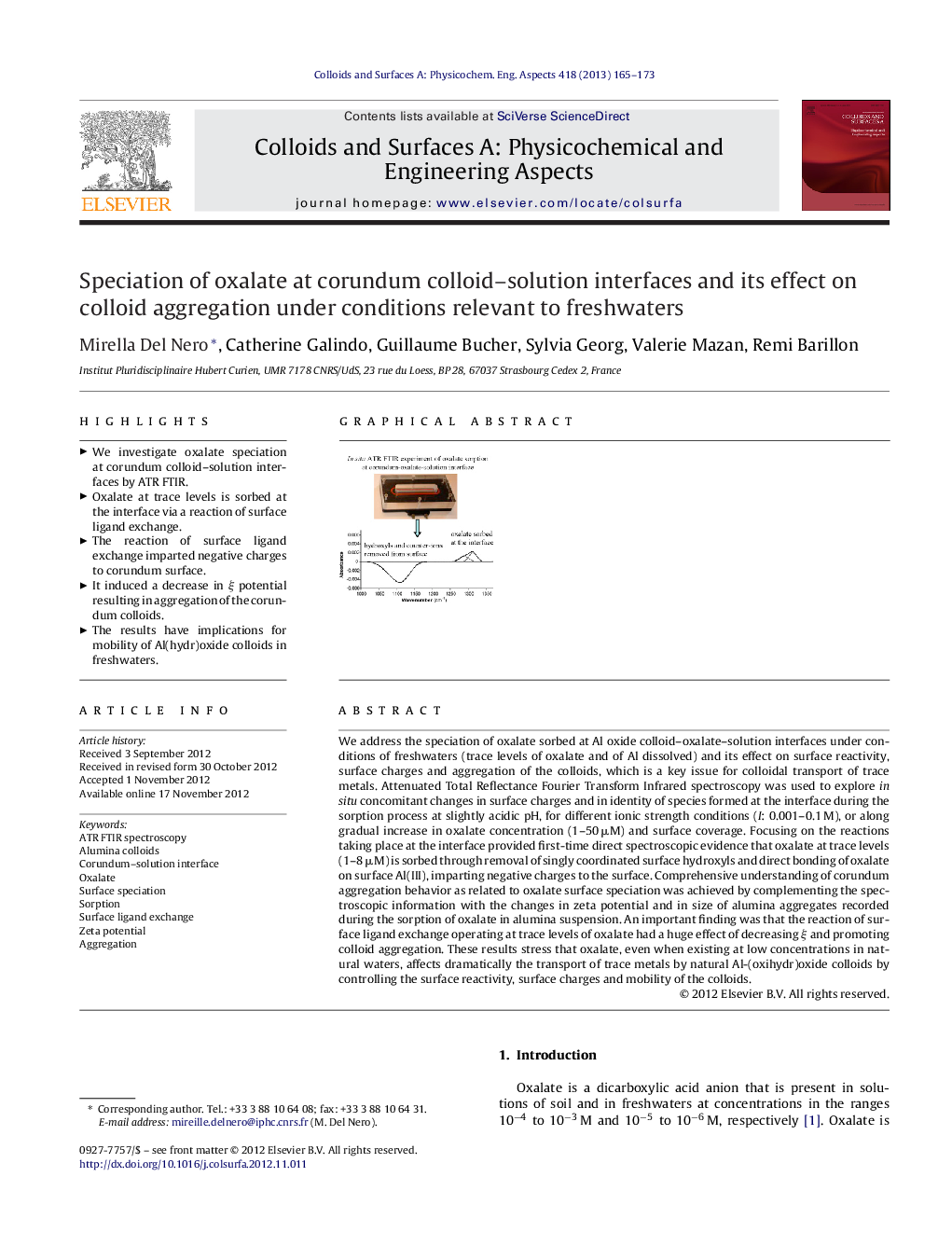| Article ID | Journal | Published Year | Pages | File Type |
|---|---|---|---|---|
| 593864 | Colloids and Surfaces A: Physicochemical and Engineering Aspects | 2013 | 9 Pages |
We address the speciation of oxalate sorbed at Al oxide colloid–oxalate–solution interfaces under conditions of freshwaters (trace levels of oxalate and of Al dissolved) and its effect on surface reactivity, surface charges and aggregation of the colloids, which is a key issue for colloidal transport of trace metals. Attenuated Total Reflectance Fourier Transform Infrared spectroscopy was used to explore in situ concomitant changes in surface charges and in identity of species formed at the interface during the sorption process at slightly acidic pH, for different ionic strength conditions (I: 0.001–0.1 M), or along gradual increase in oxalate concentration (1–50 μM) and surface coverage. Focusing on the reactions taking place at the interface provided first-time direct spectroscopic evidence that oxalate at trace levels (1–8 μM) is sorbed through removal of singly coordinated surface hydroxyls and direct bonding of oxalate on surface Al(III), imparting negative charges to the surface. Comprehensive understanding of corundum aggregation behavior as related to oxalate surface speciation was achieved by complementing the spectroscopic information with the changes in zeta potential and in size of alumina aggregates recorded during the sorption of oxalate in alumina suspension. An important finding was that the reaction of surface ligand exchange operating at trace levels of oxalate had a huge effect of decreasing ξ and promoting colloid aggregation. These results stress that oxalate, even when existing at low concentrations in natural waters, affects dramatically the transport of trace metals by natural Al-(oxihydr)oxide colloids by controlling the surface reactivity, surface charges and mobility of the colloids.
Graphical abstractFigure optionsDownload full-size imageDownload as PowerPoint slideHighlights► We investigate oxalate speciation at corundum colloid–solution interfaces by ATR FTIR. ► Oxalate at trace levels is sorbed at the interface via a reaction of surface ligand exchange. ► The reaction of surface ligand exchange imparted negative charges to corundum surface. ► It induced a decrease in ξ potential resulting in aggregation of the corundum colloids. ► The results have implications for mobility of Al(hydr)oxide colloids in freshwaters.
